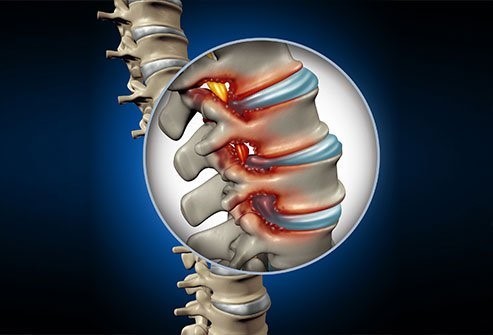
Lumbar disc disease refers to normal aging of the spine. When a spinal disc degenerates, it loses its ability to function efficiently as part of the spinal joint, which in turn can lead to back pain and if the herniated disc material compresses on the nerve root then the pain radiates to the legs.
A degenerated disc is marked by a significant decrease in hydration, making the disc inflexible, smaller, and more prone to tearing in the exterior. When one disc degenerates, it can alter the structure and mechanics of the lumbar spine, particularly at the segment surrounding the disc.
Most cases of lumbar degenerative disc disease consist of a low-grade, continuous but tolerable back pain. Pain may spread to the buttocks, groin, and upper thighs. This pain typically feels achy, dull, and can range from mild to severe.
Neurological symptoms including numbness, weakness, or sharp, shooting pains in the buttocks, hips, and/or back of the leg may be felt if the disc space collapses and compress the nerve root exiting the spine.
The Lumbar disc disease is diagnosed with clinical examination and the radiological tests.
Radiological tests include X-ray L-S spine, MRI L-S spine and the CT spine if required.

Surgical treatment is an option in cases of severe, debilitating lumbar degenerative disc disease, and is only recommended after at least 3 weeks of nonsurgical treatment. Most cases of degenerative disc disease can be managed using nonsurgical methods, and do not require surgery for effective pain relief.